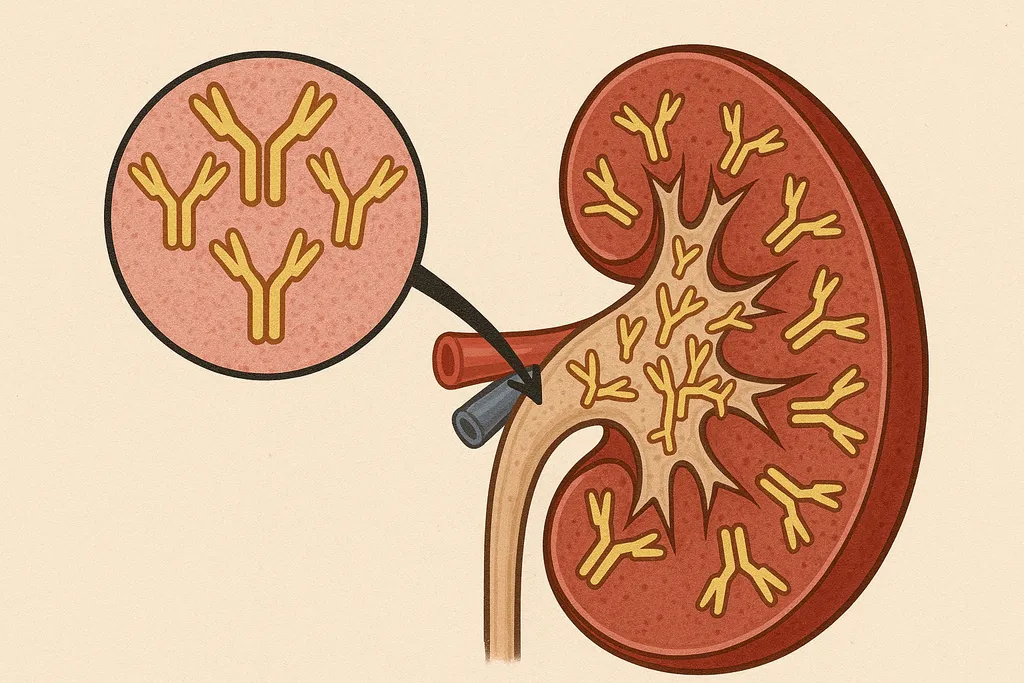Long-Term Follow-Up of MGUS Patients

An interesting article was published in the New England Journal of Medicine last month that reported on the long-term follow-up of MGUS patients. The article Long-Term Follow-up of Monoclonal Gammopathy of Undetermined Significance summarizes the outcomes of 1,384 patients diagnosed with MGUS during the period 1960-1994. The median period that patients’ progress was followed and studied was 30.4 years. The primary endpoint of the study was the progression to myeloma or lymphoid disorder. Some of the conclusions are:
- ‘During 14,130 person-years of follow-up, MGUS progressed in 147 patients (11%), a rate that was 6.5 times as high as the rate in the control population.’
- On average, the risk of progression from MGUS to multiple myeloma increases at a rate of approximately 1 % per year after diagnosis. To be more specific the authors report ‘The risk of progression without accounting for death due to competing causes was 10% at 10 years, 18% at 20 years, 28% at 30 years, 36% at 35 years, and 36% at 40 years.’
- The authors also point out, however, that the risk of progression may be adversely impacted by the presence of two risk factors in patients with IgM MGUS ‘an abnormal serum free light-chain ratio (ratio of kappa to lambda free light chains) and a high serum monoclonal protein (M protein) level (≥1.5 g per deciliter) — was associated with a risk of progression at 20 years of 55%, as compared with 41% among patients who had one adverse risk factor and 19% among patients who had neither risk factor.’
- ‘Among patients with non-IgM MGUS, the risk of progression at 20 years was 30% among those who had the two risk factors, 20% among those who had one risk factor, and 7% among those who had neither risk factor.’
An interesting article was published in the New England Journal of Medicine last month that reported on the long-term follow-up of MGUS patients. The article Long-Term Follow-up of Monoclonal Gammopathy of Undetermined Significance summarizes the outcomes of 1,384 patients diagnosed with MGUS during the period 1960-1994. The median period that patients’ progress was followed and studied was 30.4 years. The primary endpoint of the study was the progression to myeloma or lymphoid disorder. Some of the conclusions are:
- ‘During 14,130 person-years of follow-up, MGUS progressed in 147 patients (11%), a rate that was 6.5 times as high as the rate in the control population.’
- On average, the risk of progression from MGUS to multiple myeloma increases at a rate of approximately 1 % per year after diagnosis. To be more specific the authors report ‘The risk of progression without accounting for death due to competing causes was 10% at 10 years, 18% at 20 years, 28% at 30 years, 36% at 35 years, and 36% at 40 years.’
- The authors also point out, however, that the risk of progression may be adversely impacted by the presence of two risk factors in patients with IgM MGUS ‘an abnormal serum free light-chain ratio (ratio of kappa to lambda free light chains) and a high serum monoclonal protein (M protein) level (≥1.5 g per deciliter) — was associated with a risk of progression at 20 years of 55%, as compared with 41% among patients who had one adverse risk factor and 19% among patients who had neither risk factor.’
- ‘Among patients with non-IgM MGUS, the risk of progression at 20 years was 30% among those who had the two risk factors, 20% among those who had one risk factor, and 7% among those who had neither risk factor.’

about the author
Paul Kleutghen
I am a patient diagnosed in 2014 with primary plasma cell leukemia (pPCL), a rare and aggressive variant of multiple myeloma and have been very fortunate to find successful treatment at the division of Cellular Therapy at the Duke University Cancer Institute. My wife, Vicki, and I have two adult children and two grandsons who are the ‘lights of our lives’. Successful treatment has allowed Vicki and I to do what we love best : traveling the world, albeit it with some extra precautions to keep infections away. My career in the pharmaceutical industry has given me insights that I am currently putting to use as an advocate to lower drug pricing, especially prices for anti-cancer drugs. I am a firm believer that staying mentally active, physically fit, compliant to our treatment regimen and taking an active interest in our disease are keys to successful treatment outcomes.
More on Treatment Advances
Trending Articles




Get the Latest Multiple Myeloma Updates, Delivered to You.
By subscribing to the HealthTree newsletter, you'll receive the latest research, treatment updates, and expert insights to help you navigate your health.










